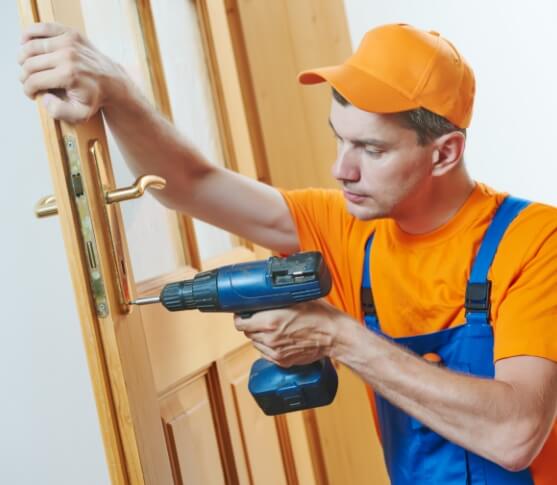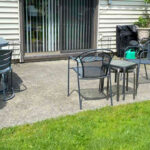A Comprehensive Guide To Exterior Door Installation

Installing an exterior door is an important home improvement task that combines aesthetics, security, and functionality. With proper planning and the right tools, you can transform the entrance to your home. If you are replacing an old door or installing a new one, this guide covers everything you need to know about exterior door installation.
Choosing the Right Exterior Door
The first step is selecting the right door for your home. Consider the style, material, and functionality that align with your home’s needs and your personal preferences. Materials such as wood, steel, and fiberglass each offer distinct advantages, and each can suit a different set of requirements.
Wood doors bring a traditional, classic look, adding charm and character to the entrance of your home. Steel doors are often chosen for their durability and ability to deliver strong security. Fiberglass doors combine aesthetics with energy efficiency and lower maintenance needs, making them a versatile choice for homeowners.
The door's design should also complement the architectural style of your home. You should also consider factors like insulation, noise reduction, and weather resistance when selecting your door. These factors will directly affect the door’s long-term performance and impact your home’s overall energy efficiency.
Measuring the Door Frame
Before proceeding with the installation, you must measure the door frame carefully. This makes sure that the new door fits properly in the existing space. Begin by measuring the width, height, and depth of the door opening to make sure the door will fit correctly.
Take accurate measurements from the inside edges of the door frame, and be sure to measure from top to bottom to get the exact height. Confirm that the door frame is square by measuring diagonally from corner to corner. If the diagonal measurements are uneven, this may indicate that the frame is out of square and will need adjustment.
Once you have accurate measurements, compare them with the size of your new door. It is also helpful to leave a small gap around the door to allow for proper weather stripping and any small adjustments during installation. This space will also help with any slight changes in the frame due to temperature or humidity shifts.
Preparing the Door Opening for Installation
Once the measurements are confirmed, it is time to prepare the door opening. Remove any old trim, frame, or door that is currently in place. You will need to use a utility knife to carefully cut through any caulk or paint that is holding the trim in place.
After removing the old door, inspect the frame for any damage or signs of wear. If there is any rotting wood, this must be addressed before proceeding with the installation. It is important that the frame is level and square to avoid issues during installation, so take the time to correct any warping.
Check that the threshold is in good condition as well. If the threshold is damaged or uneven, you may need to replace it to see to it that the new door will sit properly. This preparation will also help prevent air and water from entering your home around the door.
Installing the Door Sill
The sill is a key component of the door installation process. It serves as the base that supports the door and helps to protect your home from water damage. When installing the sill, it is important that it is level to avoid any water buildup inside the frame.
Apply a weather-resistant sealant to the bottom of the door frame so that the sill is properly sealed against drafts and water. Position the sill in place and secure it with screws, making sure it is aligned correctly. This will prevent shifting and help maintain the door's integrity over time.
Once the sill is installed, check that it is firmly in place and level. A sill that is not properly installed can cause unevenness in the door’s alignment. This misalignment can lead to poor door function and potential security issues.
Attaching the Door to the Frame
With the sill in place, it is time to attach the door to the frame. Lift the door carefully and position it in the frame, checking that it rests on the sill. Align the hinges of the door with the hinge slots on the frame, making sure the door is even and level.
Use screws to attach the hinges to the door frame. Tighten the screws securely, but avoid overtightening, which could cause misalignment or damage the frame. Test the door by opening and closing it a few times so that it operates smoothly.
If the door does not swing freely, check the alignment and make any necessary adjustments. A well-aligned door will open and close with ease, without scraping or sticking to the frame. The right placement and attachment of the door are key to its long-term functionality.
Installing the Door Hardware
The next step in exterior door installation is installing the door hardware, such as the handle, lock, and deadbolt. Begin by marking the location for the handle and lock on the door. Use a drill to make precise holes for the hardware, making sure they align perfectly.
Attach the door handle and lock, following the manufacturer’s instructions closely. Check that each component fits securely and functions correctly before moving on to the next step. The door hardware plays an important role in the door's overall security and ease of use.
Test the hardware after installation to check that it functions smoothly. The lock should engage easily, and the handle should turn without resistance. Adjust any components as needed to make sure they work as intended.
Sealing the Door Frame
Once the door and hardware are installed, the next step is to seal the door frame. This helps to prevent air and water leaks, improving the energy efficiency of your home. Apply caulk or foam insulation around the perimeter of the door frame so that there are no gaps.
Smooth the sealant with a damp cloth to create a neat, even finish. Check the seal around the entire door to make sure it is secure and without any visible gaps. A well-sealed door will protect your home from drafts and moisture damage.
Additionally, sealing the door frame improves your home’s overall insulation, making it more comfortable and energy-efficient. Take the time to properly seal all gaps to maximize the benefits of your new door installation.
Final Adjustments and Testing
After securing the door and hardware, you must test the door to make sure it functions properly. Open and close the door several times to check that it swings smoothly. If the door sticks or has trouble closing, adjust the hinges or hardware as necessary.
Check the door's alignment so that it is square and plumb within the frame. If there are any issues with the door not latching properly, make adjustments to the strike plate or lock mechanism. The final alignment will see to it that your door works efficiently.
It is also important to test the weather stripping and sealing to make sure it has a tight seal. Any gaps can lead to drafts, water infiltration, or energy loss. Make any necessary adjustments to prevent these issues.
Ongoing Maintenance for Longevity
Once your new exterior door is installed, regular maintenance is important for keeping it in good condition. Periodically check the door for any signs of wear, such as scratches, dents, or loose hardware. Reapply paint or stain to wooden doors as needed to protect them from the elements.
Inspect the weather stripping and seals around the door regularly. If the seals become cracked or damaged, replace them promptly to maintain the door's energy efficiency. Regular maintenance will make sure the door continues to perform well and last for many years.
Additionally, lubricate the hinges and locks as needed to prevent squeaks and ensure smooth operation. A well-maintained door will continue to offer both security and style for the long term.
Troubleshooting Common Door Installation Issues
Even with careful installation, issues can arise during or after installing an exterior door. One common problem is the door not closing properly, which can occur if the door is not aligned correctly within the frame. This misalignment can lead to gaps that affect both security and energy efficiency.
Another issue to look for is difficulty in locking the door. This can happen if the strike plate is not positioned correctly or if there is an obstruction preventing the latch from engaging fully. In this case, adjusting the strike plate or checking the lock mechanism may resolve the problem.
Lastly, drafts around the door can be a concern, especially if the weather stripping is not properly installed. It is important to check the seals around the door and replace any damaged or worn weather stripping. Addressing these issues quickly can prevent further complications and improve the door’s overall performance.
Transform Your Home with Professional Exterior Door Installation
For your next exterior door project, trust the professionals at Honey Do Men to handle the installation with skill and expertise. Our home exterior services are designed to meet your needs and ensure a lasting and high-quality result. Contact us today for a consultation to improve your home's entrance. Let us assist you with the installation of your new exterior door, designed to enhance both security and curb appeal.




